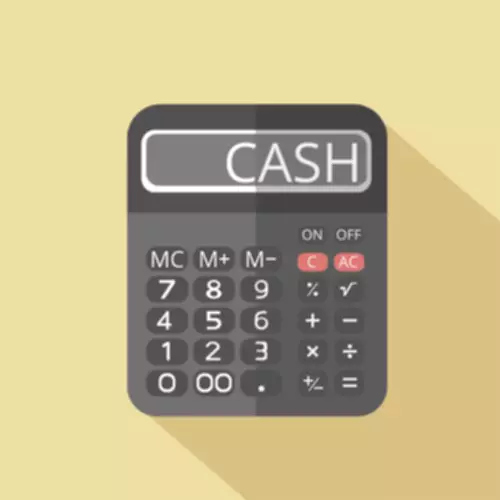Content

Accounting for notes receivable can be burdensome and error-prone if approached manually. Notes receivable are oftentimes accepted from customers that may need to extend the payment period over which a receivable is repaid. Notes receivable involve the creation of a promissory note, which is notes receivable the promise to repay a prescribed amount of money at, or over, a predetermined timeframe. As a trade note receivable can replace an invoice, to obtain
funding before the trade note maturity date, you can arrange with your bank
that the bank advances the amount due on the trade note.
- We follow strict ethical journalism practices, which includes presenting unbiased information and citing reliable, attributed resources.
- The payee is the party who receives payment under the terms of the note, and the maker is the party obligated to send funds to the payee.
- Notes receivable are generally considered to be an asset on a company’s balance sheet.
- In the following example, a company received a 60-day, 12% note for $1,000 from a customer on account on January 1.
- In this case, the company could extend the payment period and require interest.
However, some transactions are better completed with a more formal promise to pay, called a promissory note. When a promissory note is accepted, a business records the amount due on its accounting books as a note receivable, meaning an asset. Notes receivable are debts that are due to the business from its customers. These can include promissory notes, open accounts or any other types of trade receivables. Notes receivable are usually recorded on the balance sheet as assets and are marked down to their present value. It is not unusual for a company to have both a Notes Receivable and a Notes Payable account on their statement of financial position.
Balance Sheet Reporting and Disclosures: Assets-Accounts Receivable
Harold Averkamp (CPA, MBA) has worked as a university accounting instructor, accountant, and consultant for more than 25 years. He is the sole author of all the materials on AccountingCoach.com. Our mission is to empower readers with the most factual and reliable financial information possible to help them make informed decisions for their individual needs.
Add note receivable to one of your lists below, or create a new one. The articles and research support materials available on this site are educational and are not intended to be investment or tax advice. All such information is provided solely for convenience purposes only and all users thereof should be guided accordingly.
Duration
Notes receivable have several defining characteristics that include principal, length of contract terms, and interest. The principal of a note is the initial loan amount, not including interest, requested by the customer. If a customer approaches a lender, requesting $2,000, this amount is the principal. The date on which the security agreement is initially established is the issue date.
Willamette records the revenue when the lumber is shipped and a corresponding accounts receivable. On the opposite side of the transaction, Home Depot records a purchase of inventory and an account payable. These transactions are governed by the Uniform Commercial Code and often there is no other documentation or agreement other than a purchase order from Home Depot and an invoice from Willamette asking for payment.
Notes Receivable Terms
In contrast, notes receivable (an asset) is a more formal legal contract between the buyer and the company, which requires a specific payment amount at a predetermined future date. The length of contract is typically over a year, or beyond one operating cycle. There is also generally an interest requirement because the financial loan amount may be larger than accounts receivable, and the length of contract is possibly longer.
The Fenton Company should also indicate the default on the Zoe Company’s subsidiary accounts receivable ledger. When the borrower or maker of a note fails to make the required payment at maturity, the note is considered to have defaulted. In this example, interest is based on the fact that the note has been outstanding for 62 days. The individual or business that signs the note is referred to as the maker of the note. Notes receivable refers to a written, unconditional promise made by an individual or business to pay a definite amount at a definite date or on demand.
Written by True Tamplin, BSc, CEPF®
An automated financial management system, such as NetSuite Cloud Accounting Software, simplifies the journal entry process and integrates with cash management to more easily manage notes receivable. Some times notes can be converted into cash by selling them to a financial institution at a discount. The discount rate is the annual percentage rate that the financial institution charges for buying a note and collecting the debt.
A note receivable is a written promise to receive a specific amount of cash from another party on one or more future dates. Overdue accounts receivable are sometimes converted into notes receivable, thereby giving the debtor more time to pay, while also sometimes including a personal guarantee by the owner of the debtor. More sophisticated terms and real-world circumstances can quickly complicate the straightforward example above and cause Sparky exponential accounting work. If Sparky’s fiscal year ends during the note receivable term, additional journal entries are required for interest accruals. And if Joe fails to pay any part of the note, Sparky would need journal entries to record write-offs.
The Accounting Gap Between Large and Small Companies
The discount period is the length of time between a note’s sale and its due date. Trade notes that consist of fresh obligations, which are usually
secure, can replace the related invoices. In such cases, when the trade note is
created, the invoice balance is reduced by the amount of the trade note, and a
new open entry of a payment document type is created for the trade note.
Is Notes payable credit or debit?
When repaying a loan, the company records notes payable as a debit entry and credits the cash account, which it records as a liability on the balance sheet. After this, the company also considers the interest rate on the loan.
The company will debit its current asset account Notes Receivable for the principal amount of $10,000. For accounting purposes, a payee records a note receivable as an asset on its balance sheet and the related interest income on its income statement. The portion of the note receivable due to be repaid within one year is classified as a current asset and the balance as a long-term asset.
In some industries, it is common for a seller to insist on a note rather than an open account for certain types of sales. For a comprehensive list of resources such as access forms, announcements, lender letters, notices and more. Possibility 2 – The company realizes the customer will NEVER be able to pay and writes him off. Situation 3 – The customer dishonors the note and does not pay on the due date. Eliminate manual data entry and create customized dashboards with live data.

It is possible to combine the previous two entries by debiting Notes Receivable and crediting Sales. Together, the principal and interest portions represent the note’s maturity value. A case in point is the sale of equipment or other personal or real property in which payment terms are normally longer than is customary for an open account.

 | Tutti i diritti riservati 2022 © AS P.r.i
| Tutti i diritti riservati 2022 © AS P.r.i